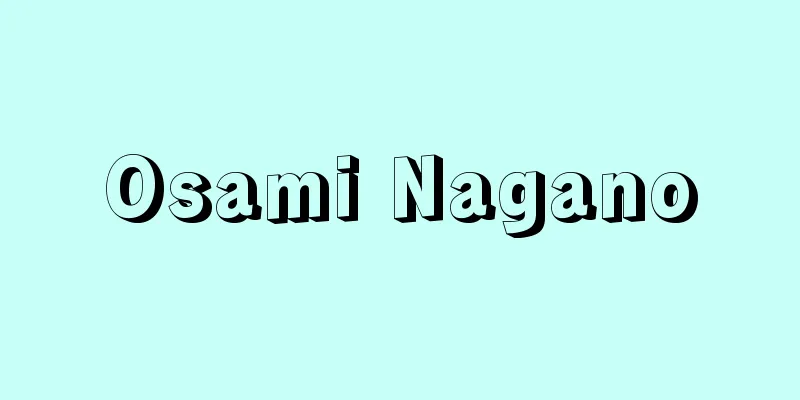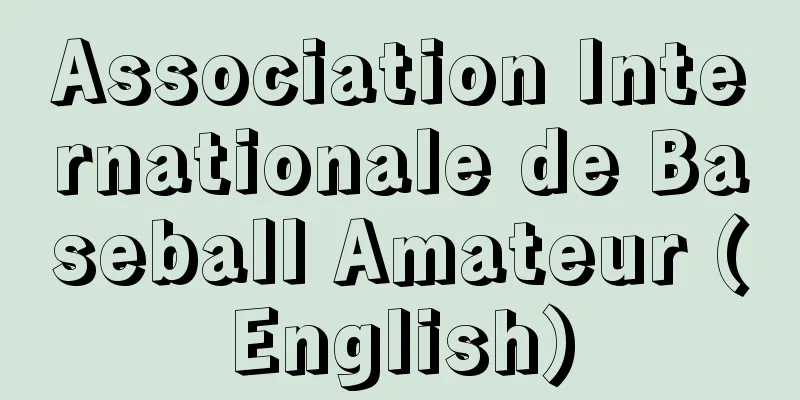Artificial rain - artificial rain

|
To artificially create rain (or snow) by seeding clouds or other methods. Attempts to make it rain during droughts have been made since ancient times by lighting fires or firing cannons into clouds, but these methods were used at a time when the mechanism of rain formation in clouds was not understood. In 1933, T. Bergeron of Sweden published his famous ice crystal theory on how rain and snow form in clouds, and in 1938, W. Findeisen of Germany predicted that rain and snow could be made to fall by artificially scattering ice nuclei in clouds based on the ice crystal theory. Furthermore, in 1946, V. J. Schaefer of the United States found that many ice crystals were generated when he dropped a piece of dry ice into a refrigerator filled with supercooled fog. This experiment was the first to test Findeisen's idea and make it a reality. In the same year, American B. Vonnegut discovered that tiny crystals formed when silver iodide is burned act effectively as ice nuclei at temperatures below -50°C. Based on these studies, scientists at the General Electric Laboratory in the United States conducted experiments in which they dropped small pieces of dry ice onto clouds from an airplane and dropped burning coal soaked in silver iodide onto clouds, and succeeded in turning supercooled natural clouds into clouds of ice crystals. This was the first modern attempt at artificial rainmaking that targets nature. Since then, many experiments on artificial rainmaking using dry ice and silver iodide have been conducted in various countries around the world, including Japan. The main technical methods used to create artificial rain in countries around the world to date and their results can be summarized as follows: (1) Dry ice method: Several kilograms of dry ice are crushed into small pieces about 1 cm in diameter and scattered onto the clouds from an airplane. If the temperature at the cloud top is below -7°C and the thickness of the supercooled cloud layer is more than 1,500 meters, there is a high probability of rain. (2) Silver iodide method: Silver iodide is dissolved in acetone and burned to produce silver iodide smoke. The smoke is emitted from an airplane or on the ground. There is also a method in which silver iodide is mixed with gunpowder and shot into a cloud to cause an explosion. This method was adopted in the former Soviet Union, and since 1 gram of silver iodide can produce an enormous number of microparticles (about 10 particles), it is said that only about 10 grams of silver iodide is needed for one experiment. These methods of artificial rainfall have been used to increase the water level of dams (for hydroelectric power generation, various water sources, etc.). It is believed that they can increase rainfall (snow) by about 10 to 20%. [Masaji Ota] [Reference] |Source: Shogakukan Encyclopedia Nipponica About Encyclopedia Nipponica Information | Legend |
|
雲に種まきをする方法などによって人工的に雨(または雪)を降らすこと。干魃(かんばつ)のときなどに雨を降らせようとして火を燃やしたり、雲の中に大砲を打ち込む試みは古くから行われてきたが、これらの方法は、雲の中で雨のできる仕組みがわかっていない時代のものであった。1933年にスウェーデンのベルシェロンT. Bergeronが、雲の中で雨や雪のできる仕組みについて有名な氷晶説を発表し、1938年にはドイツのフィンダイゼンW. Findeisenが、氷晶説に基づいて人工的に氷晶核を雲の中にまくと雨や雪を降らせることができることを予言した。またさらに1946年になってアメリカのシェーファーV. J. Schaeferは、過冷却した霧でいっぱいになっている冷蔵庫の中にドライアイスの破片を落としたところ、たくさんの氷晶が発生することをみいだした。この実験はフィンダイゼンの考えを初めてテストして実現したこととなった。同年にアメリカのボンネガットB. Vonnegutは、ヨウ化銀を燃やしたときにできる微細な結晶が零下50℃以下で氷晶核として有効に作用することを発見した。これらの研究に基づいてアメリカのゼネラル・エレクトリック研究所の科学者らは、飛行機の上からドライアイスの細片を雲の上に落としたり、ヨウ化銀をしみ込ませた石炭を燃やしながら雲の上に落とす実験を行い、過冷却した自然の雲を氷晶の雲に変えることに成功した。これが現代の人工降雨に関する自然を相手とした最初の試みであった。それ以来ドライアイスやヨウ化銀を用いた人工降雨に関する実験は、日本を含め世界各国で数多く行われてきた。 いままでに世界各国で行われてきた人工降雨のおもな技術的方法と、その成果をまとめてみると次のとおりである。 (1)ドライアイス法 ドライアイス数キログラムを直径約1センチメートルの小片に砕いて飛行機から雲の上にまく。このとき雲頂の温度が零下7℃以下で、過冷却した雲の層の厚さが約1500メートル以上の場合には、高い確率で雨が降る。 (2)ヨウ化銀法 アセトンに溶かし、これを燃やしてヨウ化銀の煙を出す。飛行機または地上で発煙する。またヨウ化銀を火薬と混ぜて雲の中に打ち込み爆発させる方法もある。これは旧ソ連で採用されたもので、ヨウ化銀1グラムから1014個程度の莫大(ばくだい)な数の微粒子ができるので、1回の実験でヨウ化銀10グラム程度用いるだけでよいとされている。 これらの方法による人工降雨はダムの増水(水力発電用、各種用水など)などに利用されてきた。およそ10~20%増雨(雪)があると信じられている。 [大田正次] [参照項目] |出典 小学館 日本大百科全書(ニッポニカ)日本大百科全書(ニッポニカ)について 情報 | 凡例 |
>>: Artificial element - jinkougenso (English spelling) artificial element
Recommend
"Enyuin's Precept Diary" - Enyuin's Precept Diary
...From the mid-Heian period onwards, the number ...
Picture Explanation Master - Etokihoushi
In the Middle Ages, 'e-kai' referred to t...
Hanif (English spelling)
The Arabic word for "one who has the right fa...
Koto, Go, Calligraphy and Painting - Kinkishoga
〘Noun〙 (also "kingishoga") Koto, Go, cal...
Istinpolin
… On May 29, 1453, after more than 40 days of fie...
Vesali (English spelling)
…It was one of the six great cities of ancient In...
Empty role - Kuueki
…In contrast, in Europe, which sent several inspe...
Witoto tribe
...something worn by humans to cover the body par...
Cow's flower - Cow's flower
...Because the wood is hard and difficult to brea...
"The History of the Mainstream of American Thought"
…After studying at Harvard University for two yea...
Kanze Motonori
1845-1924 A Noh actor and drummer from the late E...
Oiso [town] - Oiso
A town in Naka district facing Sagami Bay in centr...
gunshot wound
...Specific diseases caused by bites include rat-...
Literary Revolution
A cultural and ideological innovation movement th...
Shinanokinbai - Shinanokinbai
A perennial plant of the Ranunculaceae family (AP...









